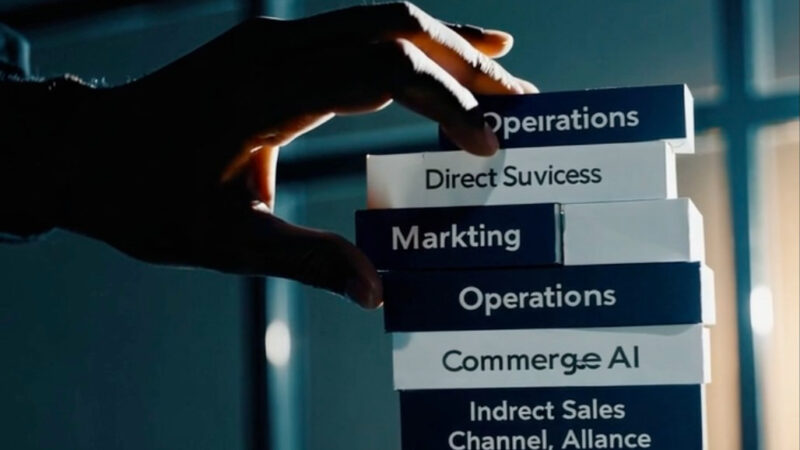Customer Success at an AI Company
Customer Success at Conversica (The Wins)
I had committed to 5 years, and even though I didn’t envision it taking as long as it did, we finally achieved most of what we originally set out to accomplish back in October 2019.
Over five years, Conversica’s Customer Success (CS) organization evolved from a reactive support unit to a strategic force in retention and expansion. From the team’s early groundwork in 2019 to 2025, the team redefined how AI adoption was sustained and scaled post-sale.
A pivotal shift came when CS reoriented around customer outcomes—not just product usage. The focus moved from health scores and ticket volume tied to simply “engagement” to business value and time-to-value in real $dollars generated by AI activities. By developing clearer onboarding paths and stronger success metrics tied to AI ROI, the team helped customers see results faster. This was vital for Conversica’s enterprise push, where buyer patience was limited and scrutiny high.
The org also implemented segmented customer engagement models—aligning CSM involvement to ACV tiers and customer maturity. Strategic accounts received white-glove service with embedded planning sessions, while smaller clients were guided through tech-touch programs, resource hubs, and AI Office Hours.
Internally, CS influenced product direction by surfacing customer frictions early and systematically. Partnering with Product, they created feedback loops that directly shaped roadmap prioritization—from reporting capabilities to multilingual agent skills.
Perhaps most notably, CS embraced Conversica on Conversica—using its own AI agents for proactive check-ins, renewal nudges, and expansion outreach. That wasn’t just good marketing—it gave the team operational leverage, enabling more personalized engagement at scale.
Customer Success – Strategic Headwinds (The Losses)
Despite these advances, Conversica’s CS org struggled in key structural areas that limited repeatable success across the base.
- Resource Fit > Resource Count
The team often lacked the right types of CSMs—particularly those with deep domain expertise in AI, change management, and enterprise systems. Moving upmarket meant customers needed consultants, not coordinators. Yet many CSMs were stretched thin, managing too many hats across onboarding, support, renewals, and training. - Time-to-Value Was Still Too Slow
Despite clearer onboarding plans, the company still struggled to get customers to meaningful results fast enough. Long integration cycles, inconsistent implementation, and sometimes unrealized ROI due to lack of customer commitment and/or skillset delayed success moments—leading to churn risks and muted expansion potential. - Cross-Functional Expansion Didn’t Stick
Like Sales and Marketing, CS faced inertia when trying to expand use cases across departments. Even with strong initial wins, new teams inside customer orgs resisted AI adoption—fearing complexity or job disruption. CSMs weren’t always equipped to navigate those political hurdles or evangelize AI horizontally.
Advice From One CEO to Another – Building Customer Success in AI GTM
- Specialize Your Team
Hire CSMs with vertical knowledge and consultative chops—not just account managers. AI requires guidance, and your clients will expect more than basic support. - Design for Time-to-Value
Bake in playbooks that get to quick wins. Your customers’ clock starts ticking at signature. Map their first 90 days like a product launch—milestones, owners, ROI checkpoints. - Segment, Don’t Standardize
Your $30K customer doesn’t need the same CS motion as your $300K one. Design tiered experiences that scale impact without diluting value. - Make “Conversica on Conversica” Your Compass
Use your own tools relentlessly in CS. It builds credibility, shows proof, and gives your CSMs superpowers. - Build a Post-Sale Expansion Engine
Don’t rely on organic adoption. Equip CSMs with materials, decks, and ROI templates to re-sell internally. Make every department a new buyer. - Train for Politics, Not Just Playbooks
Navigating internal customer resistance is an under-appreciated skill. Teach your team how to manage change, handle skeptics, and frame AI as augmentation, not automation. - Customer Success Is Product
Your best feedback loop starts here. Invest in tight CS-to-Product collaboration with regular syncs, shared OKRs, and joint roadmap visibility.
I’m only scratching the surface here….but when I stepped in as CEO in 2019, Conversica was losing more than a million dollars in ARR each month—driven by unsustainable churn in our SMB base. By 2025, we had flipped the script. In our mid-market and enterprise segments, Gross Revenue Retention surged from the mid-60s to over 95%, signaling not just satisfaction, but long-term customer commitment. That wasn’t luck—it was the result of reframing Customer Success as a strategic function, not a service tier.
And here’s the wisdom: If revenue is what you win, retention is what you earn. Great companies don’t just close deals—they keep their promises. Your CS team isn’t post-sale support; they’re the stewards of trust. Treat them accordingly.
Strategy isn’t built in slides. It’s forged in hard conversations, late-night pivots, and the messy middle of execution. Every bold move we made as a company lived or died by the strength of our executive team. What follows isn’t just my perspective—it’s the collective experience of those who were in the trenches. The functional leaders who owned the inflection points. Who navigated the trials, learned from the misfires, and helped turn strategy into motion. This is what transformation really looks like—function by function, leader by leader, decision by decision.
- Executive Team Management
- Direct Sales
- Indirect Sales / Channel / Alliances
- Marketing
- Customer Success Management
- Technical / Customer Support
- Professional Services
- Product Management
- R&D
- Cloud Operations / DevSecOps
- Legal / Security / Compliance
- HR / People
- Finance
- International Operations
- Corporate Development
- Board Management



